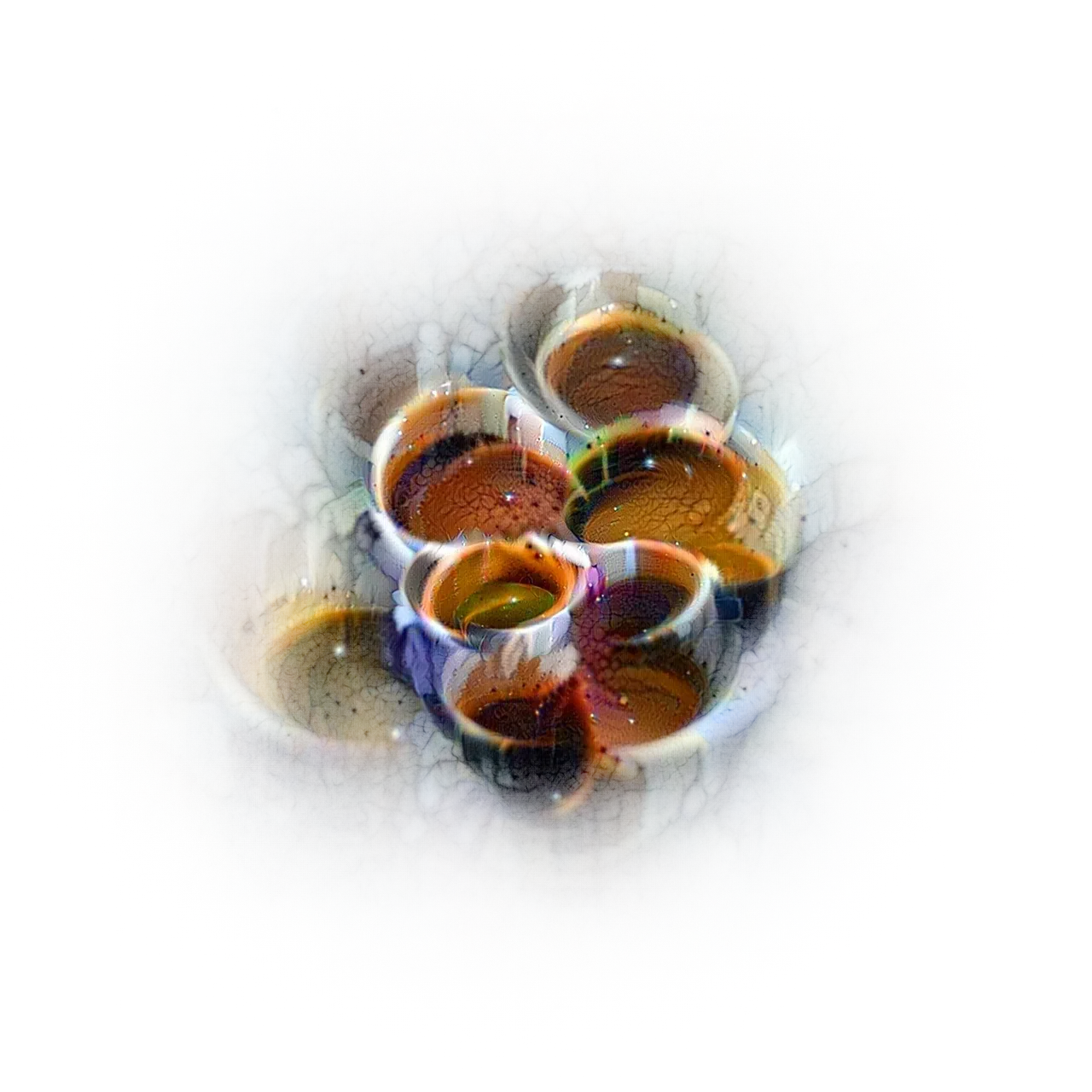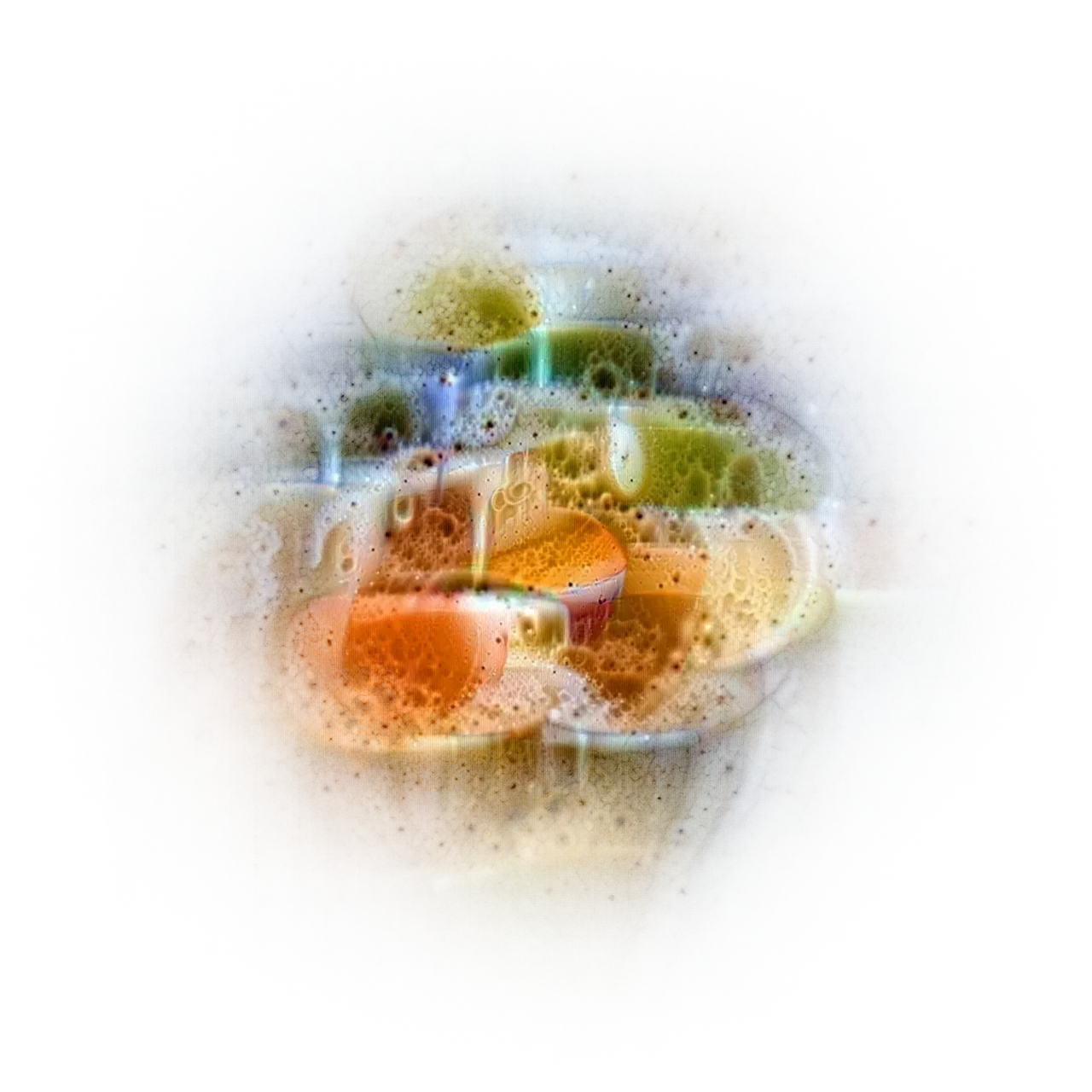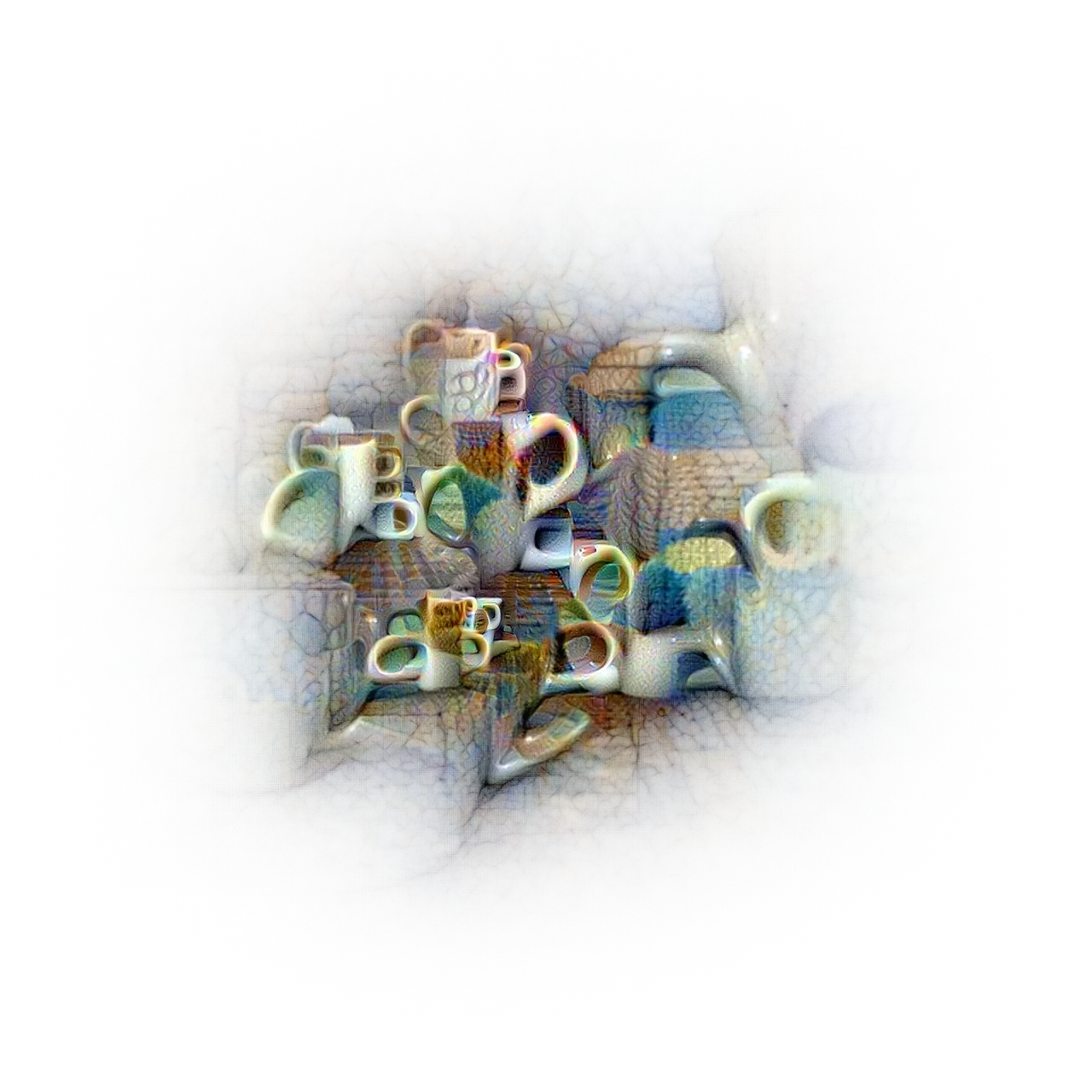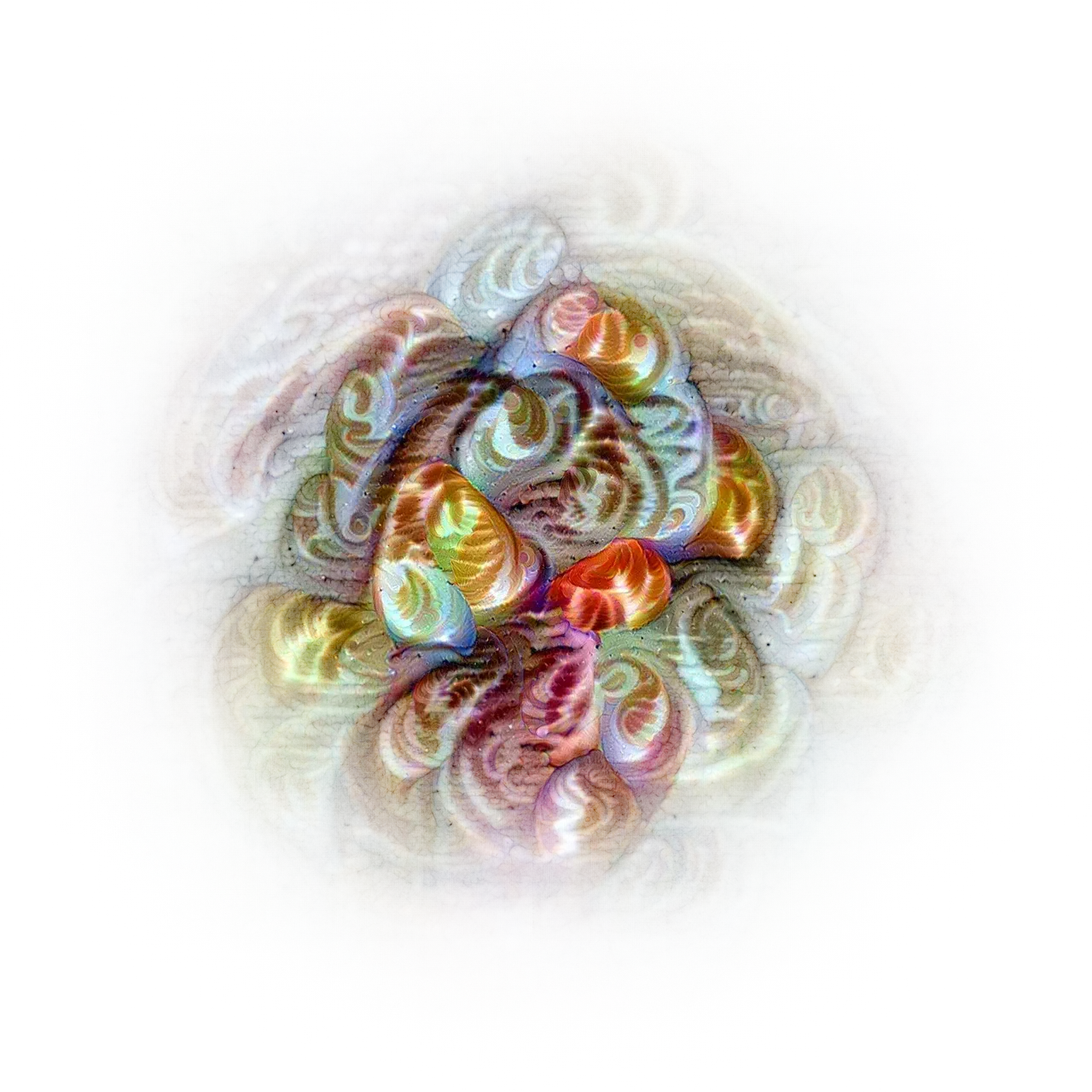LENS Project
The purpose of this tool is to provide a quick overview of the main concepts (dictionary of features) employed by a large vision model for each of the 1,000 ImageNet classes, along with an associated importance score for these concepts. For instance, when classifying "espresso," the model utilizes features such as black coffee, foam, handle (a bias), and patterns of latte art. Click on some examples to get started or use the search field at the top to find a specific class.












































How does it work?
LENS is straightforward: it's a method that automatically (they are not predefined) retrieves the concepts (or visual atoms) used by a model for a given class, and assigns an importance score to each of these concepts. The website allows scrolling through the top 10 most important concepts for each class. Each concept is represented by a feature visualization, meaning an image that exemplify the concept (or epitomizes it). By clicking on this feature viz , users can view crops of images that activate this concept. Keep in mind, the higher the importance score, the more determinant the concept is for the model.
You can start exploring a class by clicking on one of the feature viz below:
Alternatively, you can begin exploring on your own using the search engine (at the top) or by clicking the .
About LENS
This project is the result of several articles, the most notable ones being
CRAFT (CVPR) ·
MACO (NeurIPS)·
Holistic (NeurIPS)

The goal of this project is to characterize the concepts (or key features)1 used by state-of-the-art models trained on ImageNet, and detect biases using the latest explainability methods: Concept-based explainability, Attribution methods, and Feature Visualization. We also want to show that these approaches, far from being antagonistic, can be complementary in helping better understand models. The illustrated model in this project is a ResNet50, where each class in ImageNet has its dedicated page highlighting the concepts used by the model to classify that particular class.
A normalized importance score is calculated for each concept, indicating the concept's significance for the class. For example, an importance level of 30% means that the concept contributes 30% of the sum of logits for all points classified as that class. The "LENS Method" page provides an introduction explaining how to interpret the results.
🤝 Contributors¶
This interactive website relies on numerous published studies, with each member considered a contributor to the project.
CRAFT: Thomas Fel⭑, Agustin Picard⭑, Louis Béthune⭑, Thibaut Boissin⭑, David Vigouroux, Julien Colin, Rémi Cadène & Thomas Serre.
MACO: Thomas Fel⭑, Thibaut Boissin⭑, Victor Boutin⭑, Agustin Picard⭑, Paul Novello⭑, Julien Colin, Drew Linsley, Tom Rousseau, Rémi Cadène, Laurent Gardes & Thomas Serre.
Holistic: Thomas Fel⭑, Victor Boutin⭑, Mazda Moayeri, Rémi Cadène, Louis Béthune, Léo Andeol, Mathieu Chalvidal & Thomas Serre.
👀 See Also:¶
Furthermore, this work heavily builds on seminal research in explainable AI, specifically the work on concepts by Been Kim et al.2 and ACE3 for the automatic extraction of concept activation vectors (CAVs). More recently, the research on invertible concepts4 and their impressive human experiments.
Regarding the feature visualization, this work builds on the insightful articles published by the Clarity team at OpenAI5, notably the groundbreaking work by Chris Olah et al6. Similarly, their recent work on mechanistic interpretability8 and the concept of superposition7 has motivated us to explore dictionary learning methods.
Several articles have greatly inspired the development of the attribution method12 and importance estimation, ranging from attribution metrics11 13 14 to more recent theoretical insights 9 10.
A more comprehensive list of this foundational body of work is discussed in the three articles that form the foundation of our project.
🗞️ Citation¶
If you are using LENS as part of your workflow in a scientific publication, please consider citing one of the articles we build on:
@inproceedings{fel2023craft,
title = {CRAFT: Concept Recursive Activation FacTorization for Explainability},
author = {Thomas Fel and Agustin Picard and Louis Bethune and Thibaut Boissin
and David Vigouroux and Julien Colin and Rémi Cadène and Thomas Serre},
year = {2023},
booktitle = {Proceedings of the IEEE Conference on Computer Vision and
Pattern Recognition (CVPR)},
}
@article{fel2023holistic,
title = {A Holistic Approach to Unifying Automatic Concept Extraction
and Concept Importance Estimation},
author = {Thomas Fel and Victor Boutin and Mazda Moayeri and Rémi Cadène and Louis Bethune
and Léo andéol and Mathieu Chalvidal and Thomas Serre},
journal = {Advances in Neural Information Processing Systems (NeurIPS)},
year = {2023}
}
@article{fel2023unlocking,
title = {Unlocking Feature Visualization for Deeper Networks with
MAgnitude Constrained Optimization},
author = {Thomas Fel and Thibaut Boissin and Victor Boutin and Agustin Picard and
Paul Novello and Julien Colin and Drew Linsley and Tom Rousseau and
Rémi Cadène and Laurent Gardes, Thomas Serre},
journal = {Advances in Neural Information Processing Systems (NeurIPS)},
year = {2023}
}
📝 License¶
The project is released under MIT license.
-
Learning a Dictionary of Shape-Components in Visual Cortex: Comparison with Neurons, Humans and Machines ↩
-
Interpretability Beyond Feature Attribution: Quantitative Testing with Concept Activation Vectors (TCAV) (2018). ↩
-
Towards Automatic Concept-based Explanations (ACE) (2019). ↩
-
Invertible Concept-based Explanations for CNN Models with Non-negative Concept Activation Vectors (2021). ↩
-
Thread: Circuits: What can we learn if we invest heavily in reverse engineering a single neural network? (2020). ↩
-
Feature Visualization: How neural networks build up their understanding of images (2017). ↩
-
Progress measures for Grokking via Mechanistic Interpretability (2023). ↩
-
Which explanation should i choose? a function approximation perspective to characterizing post hoc explanations. (2022). ↩
-
Towards the Unification and Robustness of Perturbation and Gradient Based Explanations. (2021). ↩
-
Towards Faithfully Interpretable NLP Systems: How Should We Define and Evaluate Faithfulness? (2020). ↩
-
Interpretable Explanations of Black Boxes by Meaningful Perturbation. (2017). ↩
-
On the (In)fidelity and Sensitivity of Explanations. (2019). ↩
-
Evaluating and Aggregating Feature-based Model Explanation. (2020). ↩